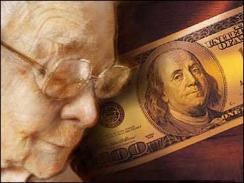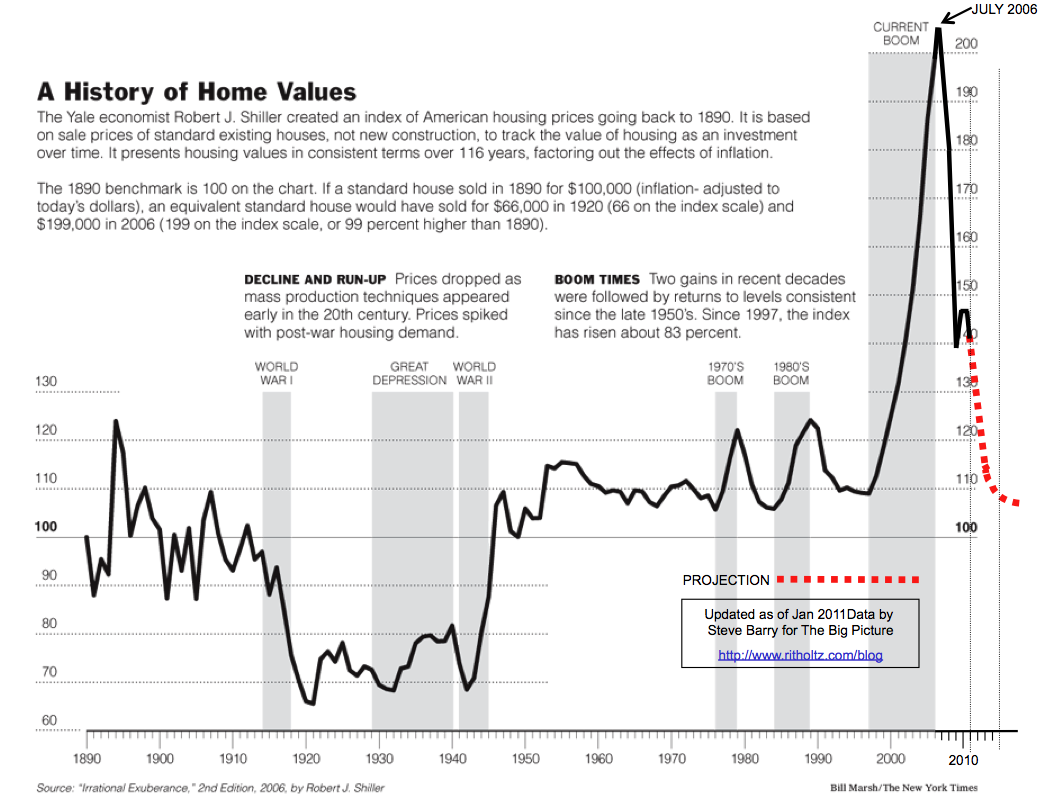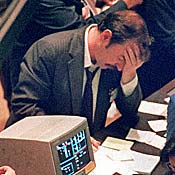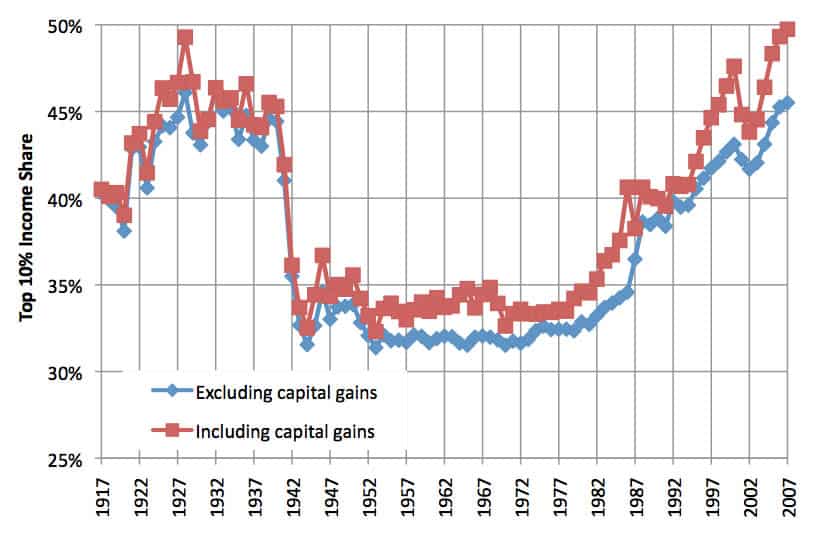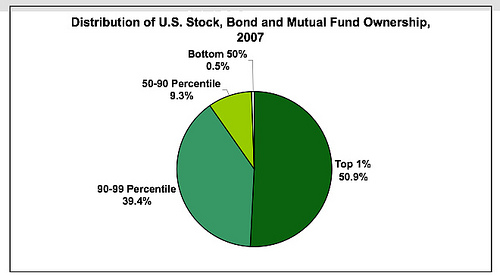Should we blame the ruling elite or should we hold the people accountable fro their actions. It’s good to see Philly isn’t the only place to find a good flash mob. Are there any similarities? Any at all?
Witnesses describe mobs, some people claim racially-charged attacks
WEST ALLIS – Witnesses tell Newsradio 620 WTMJ and TODAY’S TMJ4 of a mob of young people attacking innocent fair-goers at the end of the opening night of State Fair, with some callers claiming a racially-charged scene.
Milwaukee Police confirmed there were assaults outside the fair.
Witnesses’ accounts claim everything from dozens to hundreds of young black people beating white people as they left State Fair Thursday night.
Authorities have not given official estimates of the number of people involved in the attacks.
“It looked like they were just going after white guys, white people,” said Norb Roffers of Wind Lake in an interview with Newsradio 620 WTMJ. He left the State Fair Entrance near the corner of South 84th Street and West Schlinger Avenue in West Allis.
“They were attacking everybody for no reason whatsoever.”
“It was 100% racial,” claimed Eric, an Iraq war veteran from St. Francis who says young people beat on his car.
“I had a black couple on my right side, and these black kids were running in between all the cars, and they were pounding on my doors and trying to open up doors on my car, and they didn’t do one thing to this black couple that was in this car next to us. They just kept walking right past their car. They were looking in everybody’s windshield as they were running by, seeing who was white and who was black. Guarantee it.”
Eric, a war veteran, said that the scene he saw Thursday outside State Fair compares to what he saw in combat.
“That rated right up there with it. When I saw the amount of kids coming down the road, all I kept thinking was, ‘There’s not enough cops to handle this.’ There’s no way. It would have taken the National Guard to control the number of kids that were coming off the road. They were knocking people off their motorcycles.”
Another witness, who asked to remain anonymous, said, “it was like a scene you needed the National Guard to control.”
“To me, it looked like a scene out of a movie,” claimed the anonymous witness.
“I have not seen anything like this in my life. It was a huge mob, and it was a fight that maybe lasted one to two minutes.”
Roffers claimed that as he left the state fair with his wife, crowds near that entrance were large, and someone in that crowd .
“As we got closer to the street, we looked up the road, and we saw a quite a bit of commotion going on and there was a guy laying in the road, and nobody was even laying there. He wasn’t even moving. Finally a car pulled up. They stopped right next to the guy, and it looked like someone was going to help him. We were kind of stuck, because we couldn’t cross. Traffic was going through. Young black men running around, beating on people, and we were like ‘Let’s get the heck out of here.’ The light turned, and I got attacked from behind. I just got hit in the back of the head real hard. I’m like, ‘What the heck is going on here?’ I heard my bell ring.”
Roffers further described what witnesses said happened to the man who was lying in the street.
“People were saying he was on a bike. They tore him off his bike and beat on him. We were walking to the west on Schlinger. I was watching behind me a lot more diligently, making sure there wasn’t anybody coming to get us anymore.”
One person claimed that someone was knocked off a motorcycle.
TODAY’S TMJ4 video shows West Allis police handcuffing at least one person, but they won’t say how many people they took into custody.
Some witnesses described attacks on the State Fair Grounds as well.
Milwaukee Police said that their officers were sent to State Fair Park for “complaints of battery, fighting and property damage due to a large, unruly crowd.”
A police sergeant told TODAY’S TMJ4’s Melissa McCrady that the number of calls describing injuries are still coming in, so they could not give an accurate number of people who were injured.
That sergeant explained that some injuries were serious, and local hospitals were attending to the injured.
As of early Friday morning, Milwaukee Police said they had no one in custody.
One woman told police that she was sitting in her car with a window down when some teenagers reached through her window and started attacking her.
“I think once we get all the info in it’ll be just like that, like what happened in Riverwest,” said the police sergeant.
West Allis Police ask you to call them at 414-302-8000 if you have any information.
Eric: “I feared for my life”
Eric, who asked Newsradio 620 WTMJ not to use his last name, talked about the incidents that happened as he, his wife and a neighbor left the fair Thursday.
“We exited at the Schlinger and 84th exit, and we walked south about a block, and then went up and got our car, came back up and around down Schlinger. When we made a left hand turn, we were stopped in traffic. I looked toward the bridge, right before you get on the freeway, and all I saw was a road full of black kids, jumping over people’s cars, jumping on people’s hoods, running over the top of them.”
Eric then claimed that he saw hundreds of young black people coming down a sidewalk.
“I saw them grab this white kid who was probably 14 or 15 years old. They just flung him into the road. They just jumped on him and started beating him. They were kicking him. He was on the ground. A girl picked up a construction sign and pushed it over on top of him. They were just running by and kicking him in the face.”
Then, Eric talked about trying to get out of the car to help the victim.
“My wife pulled me back in because she didn’t want me to get hit. Thankfully, there was surprising a lady that was in the car in front of me that jumped out of the car real quick and went over there to try to put her body around the kid so they couldn’t see he was laying there and, obviously, defenseless. Her husband, or whoever was in the car, was screaming at her to get back into the car. She ended up going back into the car. These black kids grabbed this kid off the ground again, and pulled him up over the curb, onto the sidewalk and threw him into the bushes like he was a piece of garbage.”
Eric claimed that the victim in that beating was by himself, and that there was a split of white people on one sidewalk and black people on the other.
“There was nobody else around to help him. There were no other white people, period, on that side of the street. They were going in the opposite direction because, those people who were coming out of the fair that saw these people coming, they either went back into the fair or took off running south on 84th Street.”
Eric expressed anger at the State Fair Police for what he considered a lack of response.
“The thing that irritated me, the State Fair Police, the State Police, were down by the Pettit entrance to get in there,” said Eric. “There was probably 5 or 6 officers down there. That’s where all these kids came from. They came out of the Midway, across the front of the Pettit. They were still filing out of there. The State Fair Police, they knew this was going on. They knew these kids were beating these guys in between that exit and Schlinger at the next gate.”
“They were stopping traffic, and I said ‘What in the hell,’ excuse my language, ‘what are you guys doing directing traffic when there are 300, 400 black kids up the road beating the hell out of everybody, pushing people off of motorcycles?’ I was livid. I could not believe they were directing traffic.”
Fair worker: attacks not limited to outside fairgrounds
A witness told WTMJ that as he worked in a kiosk at the State Fair Midway, he saw what he described as “a Riverwest type mob. Easily between 50 – 100 kids all under 18 and all African American. They were running around knocking people over (young kids and adults), looting the Midway games (stealing the prizes), starting fights.”
The witness, who asked not to be identified, couldn’t say for certain if only white people were being attacked.
“It was just complete chaos. There were police on horses, lots of security guards, and EMT’s on the scene. They never got control of the area.”
A State Fair spokeswoman said that there were arrests made involving the incidents on the grounds.
He said that as the violence happened, he was “getting ready to grab my cash register and run.”
“Not to mention this type of behavior started around 7pm and forced me to close down my stand at 9pm. It scared the paying customers out of the midway.”
The man said hoping to bring family on Friday, but has decided not to.
“I was planning on bringing my two kids to the fair tonight. I won’t be. We’ll go to the zoo instead.”
Woman: Teenagers in mob didn’t attend rap concert
One woman who asked not to be identified tells us that contrary to some belief, the young people involved in the mob did not go to the rap concert that night.
“The mob of black teenagers involved in the beatings and damage outside of State Fair last night were not there for the MC Hammer concert,” said the woman.
“I attended that concert with three of my friends last night and the crowd was mostly white and adult (as are my friends and I). Any kids there seemed to be with parents.”
She described what she saw as she left the fair.
“As we came through the exit we saw a white boy lying in the street, in the fetal position right by the traffic light, and coming towards us was tons and tons and black teens – there had to have been over a hundred – in the middle of 84th Street and on the sidewalk headed south,” she said.
“Some who stopped to kick or punch him – or in the case of one girl drop kick him in the head – as they walked past. My friends and I started towards him to help him up and a black girl walked past telling us ‘ya’ll gonna get your ***** kicked’ repeatedly. As my friend stood in front of the boy trying to get him up one of the teens picked up a traffic cone, hit her in the back of the head and ran off. A car stopped, a white woman got out to try and help. Teens jumped onto the hood of the car and ran over it. She just kept saying ‘What is wrong with you!?’ ”
The witness also told us that not every African-American teenager outside the fair grounds acted violent.
“We continued to move towards the parking lot, through even more black teenagers. Thankfully this part of the crowd was not violent.”
Roffers: “What in the hell’s going on there?”
Roffers described his emotions and reactions to the attacks outside the park.
“I turned around and looked, there was this black kid standing there laughing, thinking it’s funny. My wife’s like, ‘Let’s get out of here.’ It’s one of those things, you don’t expect it. Your reaction to it is, first of all, quite surprised, then you get so angry, it’s like, ‘What in the hell’s going on there? Why are these guys acting like such hoodlums? What are they picking on anybody for?’ We were just like cattle being herded out of the park, and they were picking and choosing who they wanted to beat on.”
He said his injuries were limited to a headache.
Roffers said the attack wouldn’t stop him from attending the State Fair.
“We will be going back,” said Roffers.
“It’s a family event for us. We get together with our family and we do stuff at the park to enjoy the fair. My biggest concern is that the State Fair Park Police and West Allis get their heads out of their butts and figure out how to do some security over there. This isn’t the first year State Fair has been going on. They should know what the heck they’ve got to do and where they’ve got to have people in place by now.”
He said that the fear spread beyond those who he believed were the target.
“There were a lot of people scared,” claimed Roffers.
“There were even some young black girls. They were screaming. They were running across the road. This one girl was like, ‘I don’t know how I’m going to get out of here. I’m all by myself.’ My wife heard her saying that. She said, ‘Walk with us. Stay with us and you’ll be OK.’ We told her we were going down the street. If she needed any assistance, we were just going down to our car. She needed to go quite a way.”
“There was this terror going on when you leave the place, you just wonder. Luckily, all the violence that was happening stayed right close by the park entrance. As we got a block away from the park, that’s when the cops started showing up.”
He said the lack of police and security presence will bring about his complaint up the various channels of State Fair and local police.
“They should be able to provide safety and traffic control,” said Roffers. “I’ve never worried about it before.”
He said he would give a written complaint to the State Fair and put in a call to West Allis Police, but that’s not all.
“I will be contacting the State Fair Park Board and I’m going to chew on their butts a little bit about what happened.”
State Fair spokeswoman: “Unfortunate situation, hopefully an isolated situation.”
State Fair Director of Marketing and Communication Kathleen O’Leary told Newsradio 620 WTMJ’s “Wisconsin’s Morning News” that the incidents should not stop people from coming to the fair.
“Certainly, don’t change your plans,” said O’Leary. “Please understand that this is an unfortunate situation, hopefully an isolated situation.”
Though witnesses had reported incidents inside the fair, she said the problems were mainly outside the fairgrounds.
“Not so much inside,” claimed O’Leary.
“We had complete control inside of what was happening inside of our gates. It’s what what spread into the neighborhoods.”
O’Leary also pointed out that the fair has “taken measures already with the bag checks, when you come into the fair,” but will increase authorities’ presence for the remaining days at the fair.
“We will be taking severe measures, significant measures. We are in task force already, circling back around, doing everything that we can to make sure the experience is enjoyable and that the safety is insured,” said O’Leary.
“They see the yellow security shirts. We have mounted police. We have bike police. We have our patrolling police. We have undercover police. That’s all because that’s exactly what we want. We want the safety measures intact at every turn.”

















